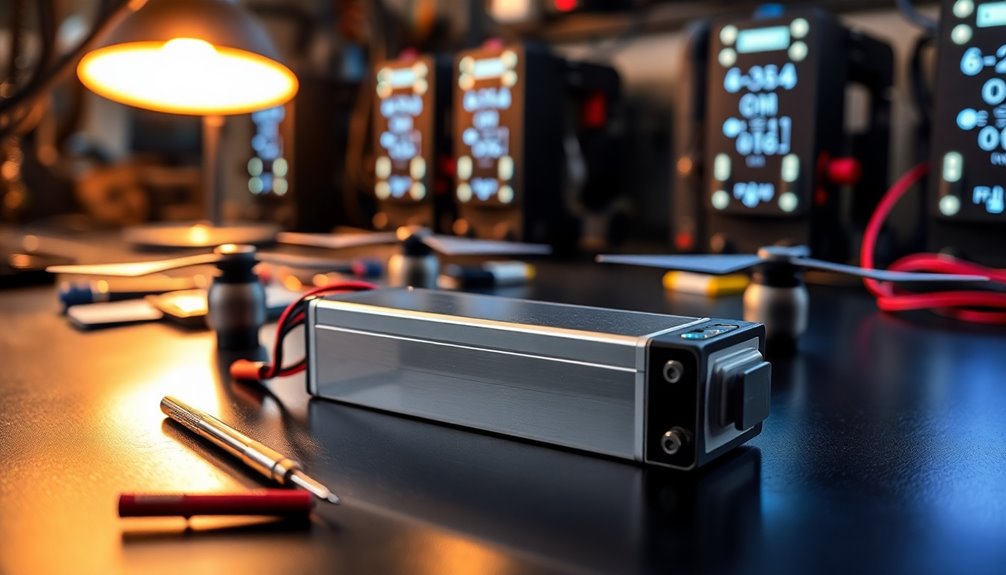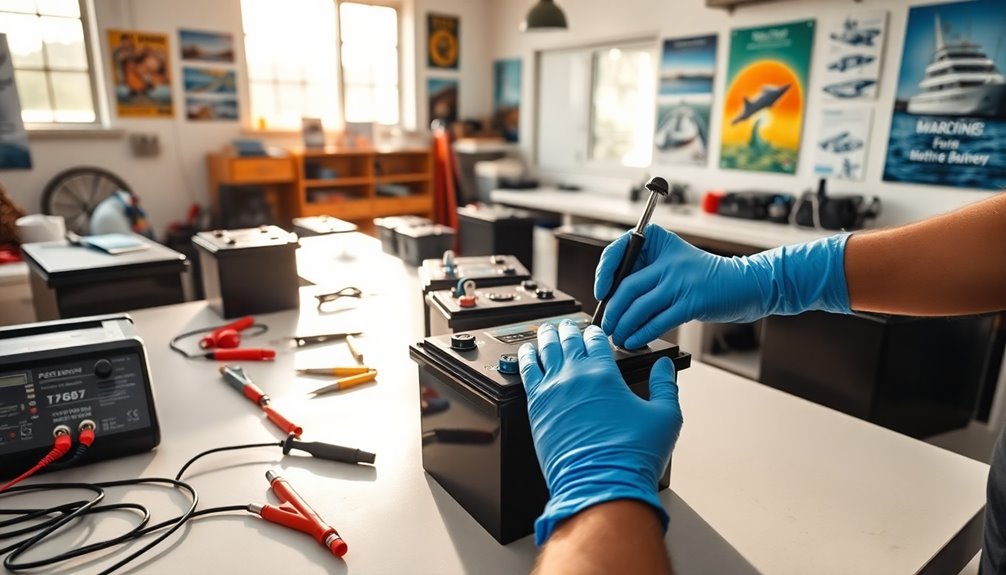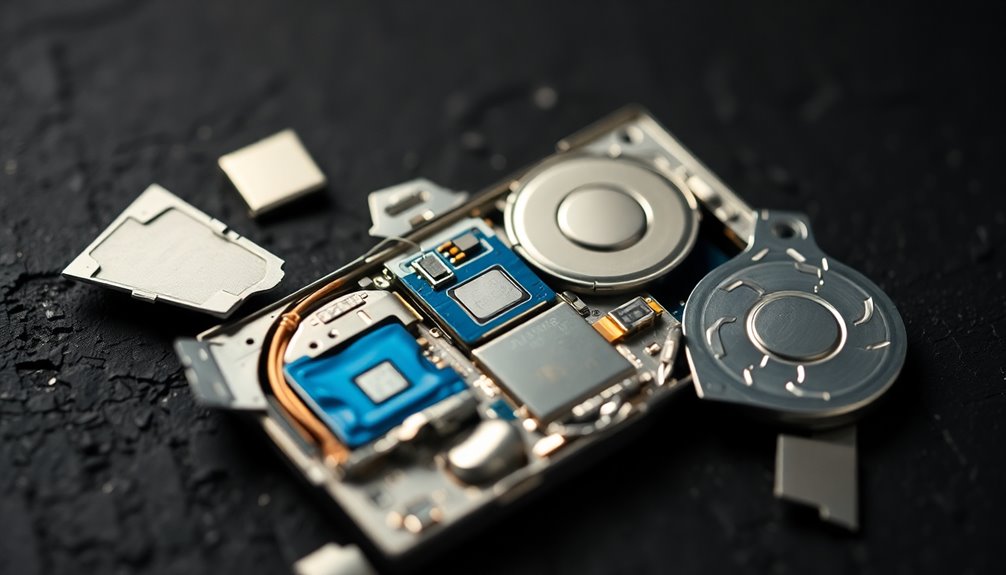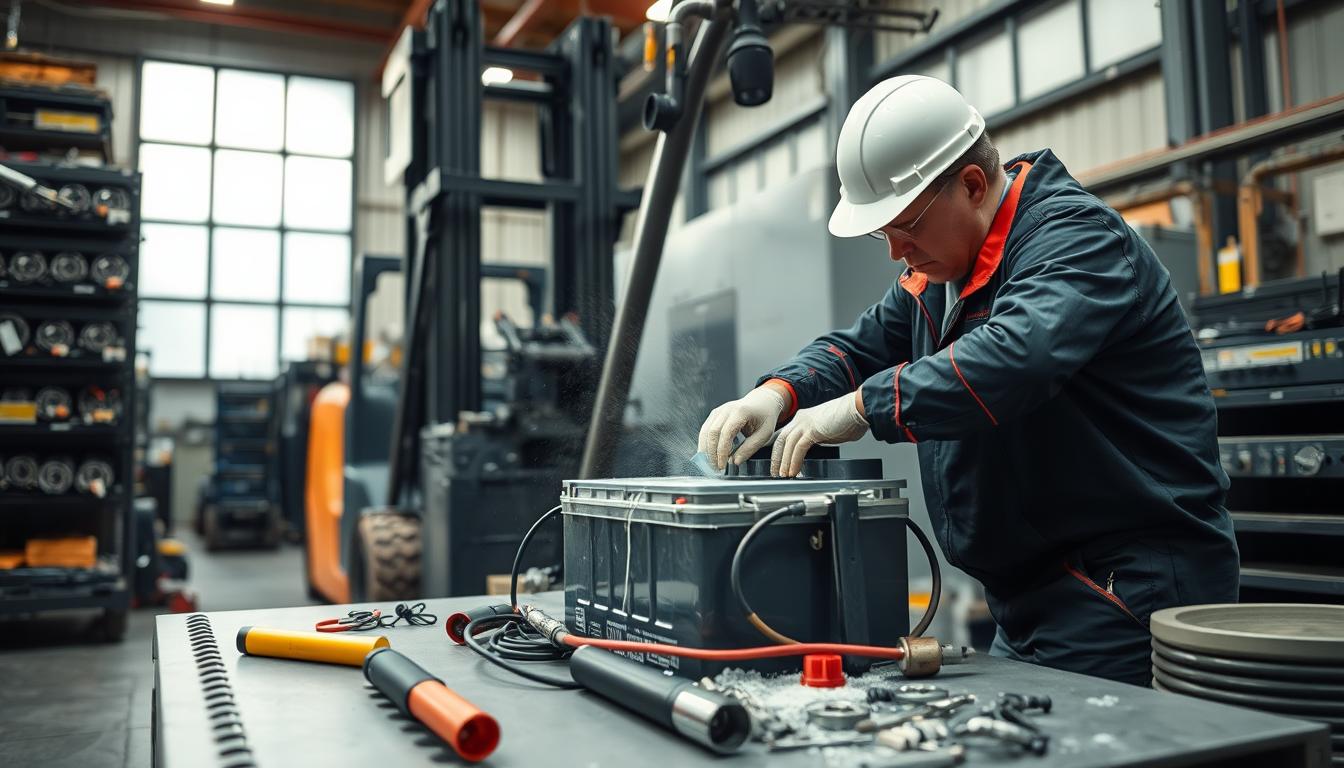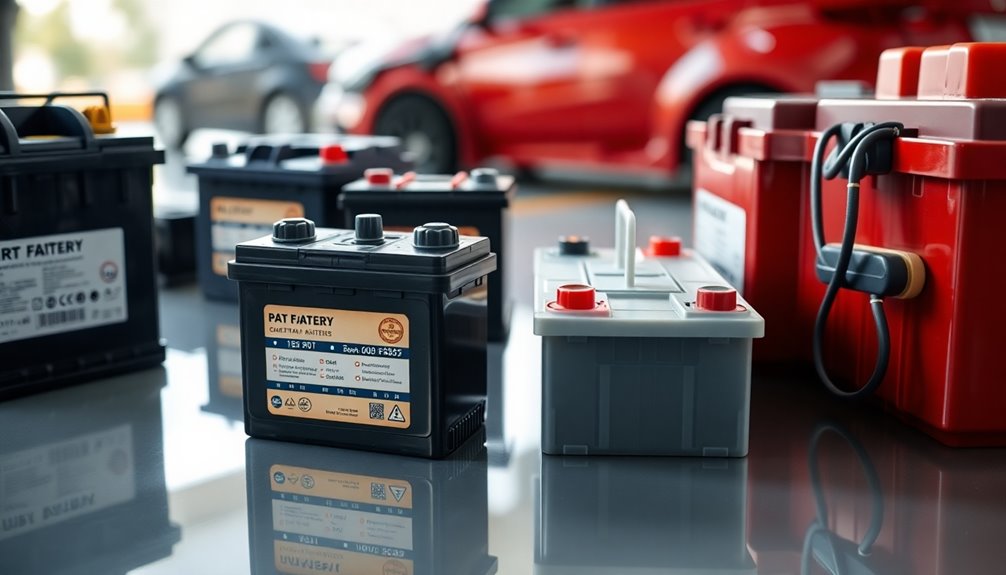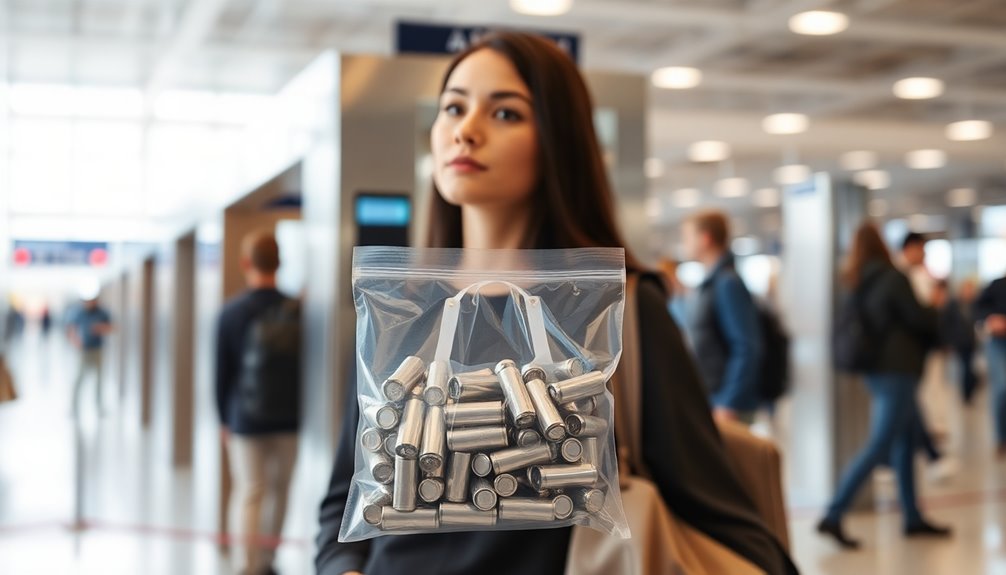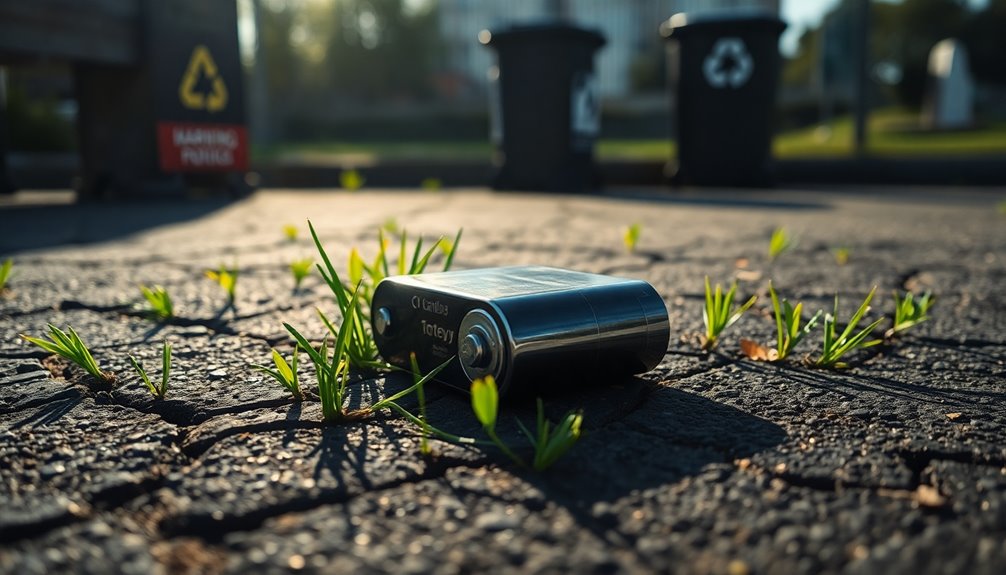Reconditioning drone batteries starts with careful charging and discharging practices. Always inspect your batteries for any physical damage before charging. Use a compatible charger and monitor the process to prevent overheating. Regularly check battery health with voltage and capacity assessments. Keep your batteries stored in a cool, dry place, ideally at 60-80% charge for short-term storage. Incorporate advanced troubleshooting techniques to maintain performance, like cleaning connectors and checking individual cell voltages. This proactive approach can extend battery life significantly, and there's more helpful information just ahead to enhance your battery management skills.
Key Takeaways
- Regularly inspect batteries for physical damage and swelling before attempting to recondition them.
- Use a compatible charger to slowly cycle the battery through charge and discharge processes.
- Monitor voltage and capacity using drone apps or multimeters to evaluate battery performance during reconditioning.
- Maintain charge levels between 60-80% during short-term use and 40-60% for long-term storage.
- Dispose of exhausted batteries responsibly, utilizing recycling programs to minimize environmental impact.
Charging and Discharging Practices
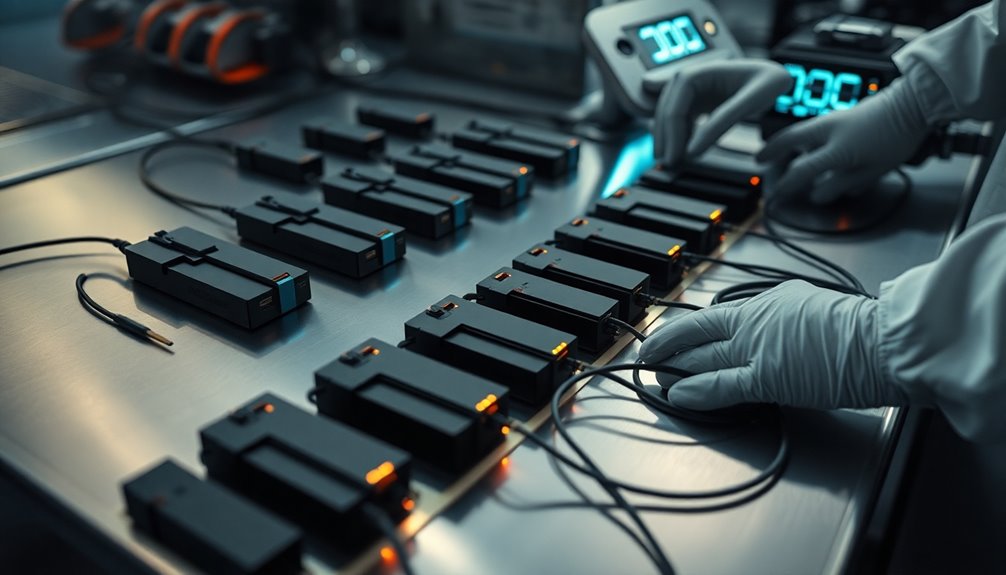
When reconditioning drone batteries, you should always prioritize proper charging and discharging practices to maximize their lifespan and performance.
Start by inspecting the battery for any physical damage or swelling before charging. Ensure that your charger is compatible with your battery type, whether it's LiPo or Li-ion, and meets the voltage requirements. Connect the charger correctly, aligning the polarity, and select the appropriate charging mode, such as balance charge for LiPo batteries.
During the charging process, monitor the charger for smooth operation and avoid overheating. Use chargers with overcharge protection, and charge your batteries in a well-ventilated, fire-safe area. Proper charging methods are vital for maintaining battery life and ensuring safety.
It's also essential to track the number of charge-discharge cycles to manage wear and tear effectively. Discharge your batteries to 50% or less if you're storing them for over 24 hours, and ensure they're powered off before removal.
Finally, store your batteries in a cool, dry place to maintain their health. By following these charging and discharging practices, you'll enhance your drone batteries' performance and longevity, ensuring they're always ready for your next flight.
Environmental Considerations
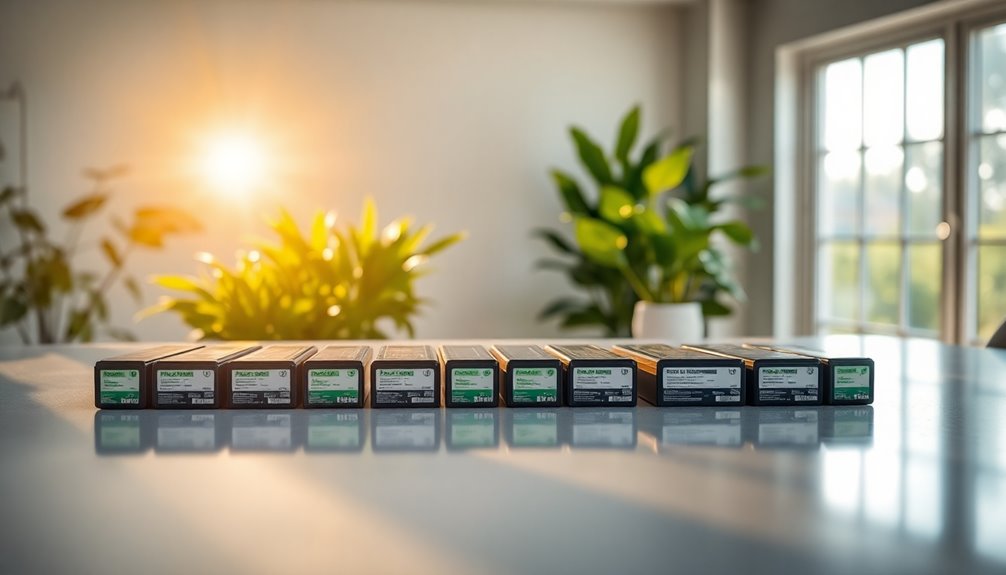
Environmental considerations play a crucial role in the lifecycle of drone batteries, affecting both production and disposal.
The production of lithium batteries focuses on reducing environmental impacts through advances in technology that aim to minimize their ecological footprint. As a drone user, you benefit from sustainable farming practices that these batteries enable, reducing the need for large machinery and pesticide use. Additionally, the role of agricultural drones contributes to a more sustainable approach by enabling precise spraying techniques that lower chemical usage.
When it comes to disposal, you must handle drone batteries responsibly. Never throw them in regular household waste, as this can lead to environmental harm and fire hazards. Make sure to fully discharge the batteries before disposal and cover the terminals with electrical tape to prevent accidental short-circuiting.
Local councils and stores like Bunnings and Battery World in Australia accept old batteries for recycling.
Consider using methods like soaking exhausted batteries in salt water for over 72 hours to ensure they're entirely discharged. By following proper disposal methods tailored to the battery type, such as lithium-ion or lithium polymer, you contribute to minimizing hazardous materials and promoting a healthier environment.
Always check with manufacturers for specific recycling guidelines to stay informed and responsible.
Battery Health and Maintenance
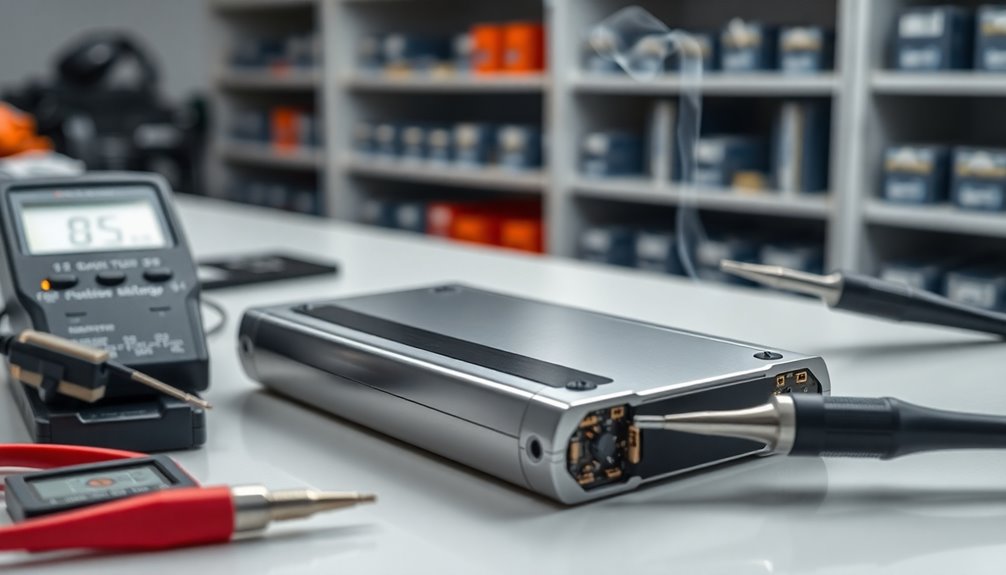
Maintaining the health of your drone's battery is essential for ensuring optimal performance and longevity. Start by conducting regular physical inspections. Look for signs of damage, such as bulges, punctures, or leaks. Check the battery body, handle, wires, and power plug for any deformation, corrosion, or discoloration. If you notice any abnormalities, replace the battery immediately.
Next, perform voltage and capacity checks. Use your drone's app, smart controller, or a multimeter to measure the battery voltage and compare it to the manufacturer's specified range. Fully charge and then discharge the battery to assess its capacity; note any significant decrease in flight time.
Monitor the internal resistance and cycle count using specialized battery analyzers. High internal resistance readings indicate a degraded battery, and if your battery exceeds its recommended cycle count of 200-500 full cycles, it's likely time for a replacement. Regularly checking the internal resistance can help identify issues before they affect performance.
Lastly, pay attention to storage and charging practices. For short-term storage, maintain a charge level between 60-80%, and for long-term storage, discharge it to 40-60%. Always store batteries in a cool, dry place and allow them to cool before charging.
Advanced Troubleshooting Techniques

To troubleshoot advanced issues with your drone's battery, start by inspecting and cleaning the battery components. Check the power-on procedure in your user manual to ensure you're following it correctly. Examine the battery compartment for any damage, wear, or debris. Pay close attention to metal connectors and battery contact pins; look for signs of damage, misalignment, or corrosion. If they appear dirty, gently clean the contact points using isopropyl alcohol.
Next, ensure the battery is properly inserted and firmly connected to the drone. Check the battery's charge level via LED indicators or a companion app. If you suspect a problem, try charging the battery or swapping it with a different one to isolate the issue. Also, inspect for bent pins or misalignment in the connectors.
If you have specialized tools, consider using the DJI Battery Killer for resetting safety lockouts or connecting the battery to a computer to reset flags. For advanced diagnostics, check individual cell voltages and perform a hover test to observe voltage stability. Additionally, monitor for any overcurrent or temperature warnings to prevent battery damage.
Predictive Maintenance Strategies
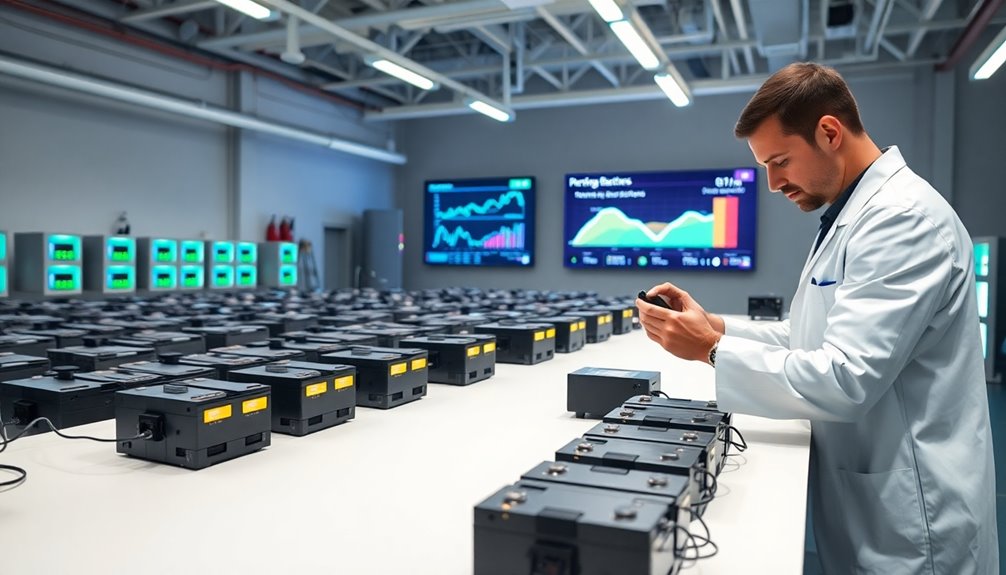
Implementing predictive maintenance strategies can significantly enhance the longevity and performance of your drone's battery. By utilizing machine learning algorithms, such as logistic regression and random forest, you can predict battery failures with remarkable accuracy, identifying critical factors like capacity and charge cycles.
For instance, logistic regression has demonstrated 100% accuracy in forecasting potential failures, allowing you to schedule preventive maintenance efficiently. This approach focuses on enhanced operational efficiency, which is crucial for maximizing your drone's potential.
Monitoring your battery's state of charge (SOC), state of health (SOH), and state of function (SOF) is crucial. Integrating sensors that track voltage, current, and temperature provides real-time data, helping you make informed decisions about your battery's status. This proactive approach minimizes downtime and enhances operational reliability, potentially improving safety by up to 50%.
Moreover, considering environmental factors like temperature and humidity ensures your battery operates within safe limits. By analyzing historical data, you can identify patterns that lead to future failures, further bolstering your drone's efficiency and cost-effectiveness.
With these predictive maintenance strategies in place, you can maintain optimal battery performance and extend its lifespan, ensuring your drone remains reliable for all your missions.
Frequently Asked Questions
How Do I Know When My Drone Battery Needs Reconditioning?
You'll know your drone battery needs attention when you notice visual or audible indicators like flashing lights or beeping sounds.
If you're experiencing control issues during a hover check, it's a sign too.
Always perform a physical inspection for damage, and check the voltage with a multimeter.
If the battery feels unusually light or shows signs of wear, it might be time to consider reconditioning or replacing it.
Can I Recondition a Swollen or Damaged Battery?
You can't recondition a swollen or damaged battery safely.
Swelling indicates internal damage, and attempting to fix it can lead to serious risks, like fire or explosion.
It's best to stop using any swollen battery immediately and dispose of it properly at a lithium-ion collection point.
Always prioritize your safety and the functionality of your devices.
Regular inspections can help you catch issues early and prevent future problems.
What Tools Do I Need for Reconditioning Drone Batteries?
To recondition batteries, you'll need specific tools. Start with a multimeter to check voltage levels and battery health.
A CP2112 debugging board is essential for removing safety lockouts, while jumper wires connect your tools. You might also want an Arduino Nano for alternative methods.
Don't forget adapters for different battery models and a battery tester to monitor performance.
Cleaning supplies like microfiber cloths help ensure good connectivity during the process.
Is Reconditioning Safe for All Types of Drone Batteries?
No, reconditioning isn't safe for all types of batteries. You should always check for signs of damage like swelling or leakage before attempting any process.
Lithium-ion and lithium polymer batteries have different reconditioning needs, so knowing your battery type is crucial.
Smart batteries may have specific requirements, while non-smart batteries can be riskier if neglected.
Always follow manufacturer guidelines to ensure safety and effectiveness when dealing with battery reconditioning.
How Often Should I Consider Reconditioning My Drone Batteries?
You should consider reconditioning your drone batteries when you notice a significant capacity loss or reduced flight times.
If you've completed around 200-500 charge cycles, it's a good time to evaluate their condition.
Regular checks every few months are crucial, especially if you see swelling or charging issues.
By staying proactive, you'll prolong battery life and ensure your drone performs at its best.
Keep an eye on those performance signs!
Conclusion
In conclusion, reconditioning your drone batteries is essential for maximizing their lifespan and performance. By following proper charging and discharging practices, considering environmental factors, and maintaining battery health, you can keep your batteries in top shape. Don't forget to employ advanced troubleshooting techniques and predictive maintenance strategies to catch potential issues early. With these steps, you'll ensure your drone operates smoothly, allowing you to enjoy countless flights without worrying about battery failure.

